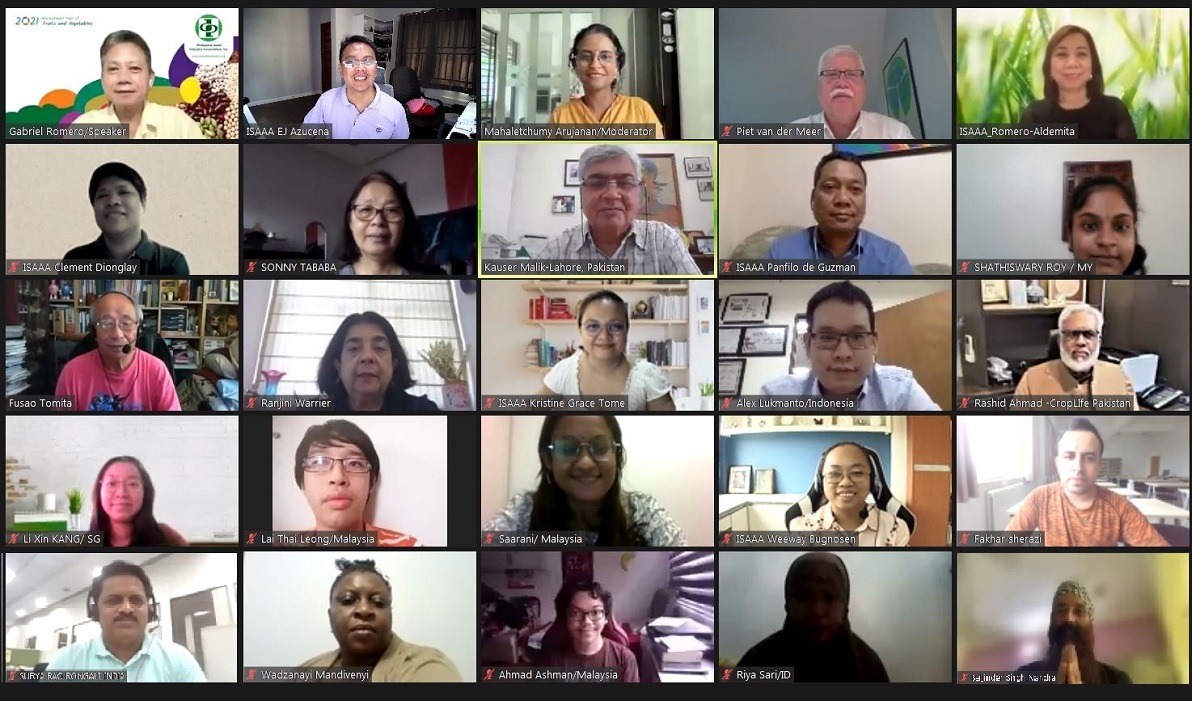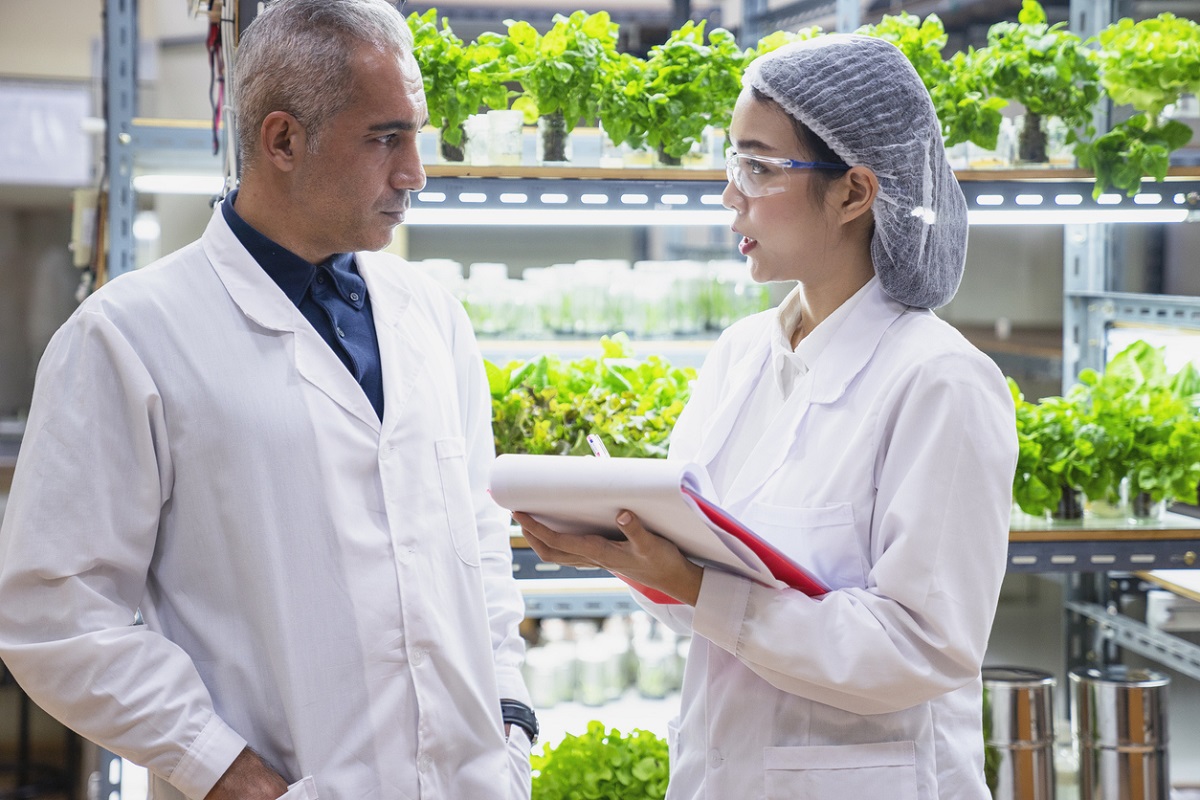ISAAA and Partners Hold Pre-COPMOP Discussions on Convention on Biological Diversity and Its Protocols (Part 2)
| |
From August 4 to 6, 2021, ISAAA, the Malaysian Biotechnology Information Center, Public Research and Regulation Initiative (PRRI), and the United States Department of Agriculture, conducted the Pre-COP-MOP 2021: Asian Regional Workshop on Current and Upcoming Items Under CBD and its Protocols. The workshop aimed to prepare experts, officials and regulators from Asia for the agribiotechnology negotiations in the upcoming Conference of the Parties-Meeting of Parties (COP-MOP) of the Convention on Biological Diversity (CBD). A total of 133 participants from 17 countries registered for the workshop to learn more about the meeting and stay updated about the developments. Seasoned international experts were invited to talk about parts of the CBD and the Cartagena Protocol on Biosafety (CPB) and some specific topics related to it to update and prepare the participants on what is discussed in the COP-MOP, and how to negotiate during the meetings.
Second of two parts (Read the first part for more information)

Prof. Piet Van Der Meer of Ghent University and a former regulator who has been involved with the CBD from the beginning provided the participants a complete yet concise historical background of the CBD, CPB, and the COP-MOP meetings. He further went on to explain risk assessment in the context of the CPB.
Risk Assessment, Gene Drives, and Synthetic Biology under the CPB
Risk assessment of LMOs, gene drives, and synthetic biology are just some of the specific topics related to biotechnology and biosafety under the CBD and CPB. Risk assessment is one the key elements of the CPB, as the Protocol requires countries to make decisions on import of LMOs for intentional introduction into the environment through science-based risk assessment. According to Van der Meer, the objective of the risk assessment is to identify and evaluate the potential adverse effects of LMOs on the conservation and sustainable use of biological diversity. But over time, reactions to risk assessment garnered increasingly mixed reactions about applicability and usefulness of the guidance. Misinterpretations of risk have been raised throughout the years. Which is why the original context and definition of terms need to be constantly reviewed. “Over the years, the original intention of the Protocol was lost. The Secretariat’s job is to remind us of the original intention. It is important to go back to the original text and definitions,” Van der Meer said.
Two of the most talked topics related to risk assessments for LMOs are food safety and environmental safety. Van der Meer clarifies the difference between the two. “Food-feed safety and environment safety are different matters. Food-feed safety is descriptive. Environmental risk is a tool to make a prediction. The things we look at food-feed safety is straightforward. In environmental risk assessment, it is broader. Given the fact that for humans or foods is very clear, for the environment it is much broader and diverse,” he said. “To avoid misunderstanding, food-feed safety is to determine which is safe or not. You can make firm decisions. For environment safety, it is predictive. You can make firm predictions.”

Gene drive is another specific biotechnology/biosafety topic discussed under the CBD and its protocols. Dr. Isabelle Coche, head of the Secretariat for the Outreach Network for Gene Drive Research, explained what gene drives are and how this new technology is discussed in the CBD. Gene drives is an emerging technology and its applications are being used for research towards human health, the environment, and agriculture. It is currently more popular as a means to mitigate vector-borne diseases like Malaria, Dengue, and Chikungunya, and controlling invasive alien species specifically in island ecosystems. Current discussions point to the fact that products of gene drives will be considered as LMOs. Coche explained that while the gene drive field is multi-layered and involves guidelines at the international, the national and the local levels, the CBD is one of the useful tools for its governance. She noted that the existing guidance under CPB in terms of the process for risk assessment is valid and is applicable for gene drive organisms. “There is a lot of precedents and experience to build on, and so governance and guidance frameworks are available to shepherd this research,” explained Coche. “While CBD is key to gene drive research governance, it is not the only international body to provide such guidance – the World Health Organization has been very active and engaged also, for research focused on health outcomes.” Gene drive remains an active topic in the COP-MOP due to its coverage of a wide range of approaches and techniques, with constant key discussions about its scope and risk assessment methods going on since 2014.
Dr. Lucia de Souza of PRRI tackled the topic of synthetic biology under the CBD and its protocols. De Souza is the former Vice President of the Brazilian National Biosafety Association, and has been involved in various projects on biosafety and biotechnologies since 2004. Synthetic biology is a term first coined over one hundred years ago and defined in 1912 as the “aim at a better understanding of natural living things even while producing artificial life.” Over the years, synthetic biology has garnered many definitions, but none of them are universal. But what is common in the many definitions is that it may refer to “a set of concepts, approaches and tools within biotechnology that enables the redesign and construct of genetic parts, biological components and systems with predictable behaviors” as stated in de Souza’s presentation. Synthetic biology mainly concerns designing and building artificial regulatory elements into genomes or constructing a complete genome rather than splicing in a gene from one organism to another or forcing a mutation in a genome for a specific purpose. In 2015, the AHTEG came up with a more current definition for synthetic biology: “Synthetic biology is a further development and new dimension of modern biotechnology that combines science, technology and engineering to facilitate and accelerate the understanding, design, redesign, manufacture and/or modification of genetic materials, living organisms and biological systems.” As the topic is currently still underway in the CBD, it is still inconclusive to determine if synthetic biology is a new emerging innovation.

Socio-Economic Considerations under the CPB, and Public Engagement
Socio-Economic Considerations (SEC) is the most debated topic under the CBD. Dr. Ranjini Warrier, who served as the Co-chair of the AHTEG on Socio-economic Considerations from 2014-2019, provided a historical account of the SEC discussions in the COP-MOPs. Article 26 establishes the right of country-members to take into account the SECs arising from the impact of LMOs on the conservation and sustainable use of biodiversity, especially its value to indigenous and local communities, when deciding to import LMOs. This has to be consistent with other international obligations. According to Werrier, a drafted element of a framework for conceptual clarity about SECs was first submitted by the AHTEG during the COP-MOP 7 in 2014. It was then recommended that the AHTEG further develop conceptual clarity and an outline for guidance. Definitions of SEC and its practical applications were compiled by the CBD Secretariat, and further discussions focusing on the development of the conceptual clarity of SEC was recommended. In 2016, the AHTEG came up with the decision that a process-based approach must be adopted and there was general agreement of the country members to have a right to take SEC into account to provide guidance. The SEC assessment was proposed to have three stages: the preparation of the assessment, then the assessment and evaluation prover covering the scope, assessment and evaluation, and lastly the recommendations arising from the assessment process. This topic will be further discussed in the COP-MOP 10.
Public awareness, education and participation is covered by Article 23 of the CBD. Article 23’s objectives include putting in place an enabling legal and/or policy frameworks and mechanisms to facilitate public awareness, education and participation concerning the safe transfer, handling and use of LMOs. It also encourages the establishment of institutional mechanisms and the capacity building of personnel in promoting and facilitating public awareness and sharing of knowledge and experiences concerning LMOs. At the current situation when the COVID-19 pandemic is at hand and there are restricted physical interactions, public participation has been challenging both for the Parties and the CBD Secretariat. Mechanisms to address this are being explored by the Secretariat. “One of the things we are working on now is a webinar on public participation,” according to Ms. Wadzanayi Mandivenyi, head of the Biosafety Unit in the Secretariat of the Convention on Biological Diversity. “We have tools to provide support and if there are good ideas, we look at them to engage and support further,” she added.
Events Leading to the Next COP-MOP
The schedule of COP-MOP 10 is yet to be finalized due to the on-going COVID-19 pandemic. But the discussions and negotiations have continued despite the setbacks and delays. At the moment, the Parties and the Secretariat are preparing to engage in the Open-ended Working Group on the Post-2020 Global Biodiversity Framework (WG2020-3) which will be held virtually from August 23 to September 3, 2021. Two information Briefings were held in July which are intended to familiarize participants with the structure and content of the framework. These will also provide the opportunity to update Parties and stakeholders about the details of the First Draft, which will be formally considered during the WG2020-3 Meeting.

ISAAA plans to conduct another similar online workshop in September 2021. To know more about this, stay tuned for updates by subscribing to the Crop Biotech Update and by following ISAAA.org on Facebook, Twitter and Instagram. Visit the websites of the CBD and the CBP to know more about the COP-MOPS, the Convention, and the Protocols on biotechnology and biosafety regulations.
| Newer Post | Archive | Older Post |
Science Speaks is ISAAA Inc.'s official blog. Weekly blog articles, authored by ISAAA writers, partners, and invited contributors, aim to help share, disseminate, and promote scientific knowledge and its vital role in achieving global agricultural sustainability and development. Your support to Science Speaks will help us achieve this goal. You can help us by donating as little as $10.

